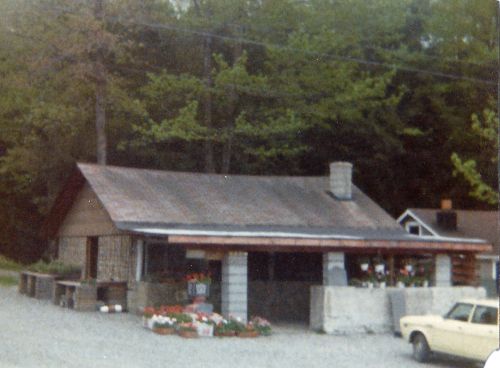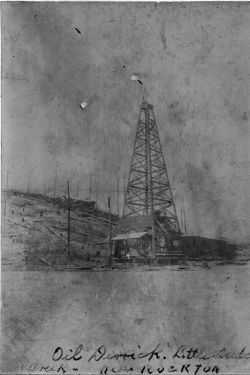DuBois Area Historical Society, Inc.
Home | Calendar | Photo Gallery | Genealogy | History Blog | Contact

Rockton's First Settler
Rockton’s first settler was John Brubaker (1810-1888), who moved to Clearfield County from Snyder County in 1839 with his wife, Barbara, and six children. He purchased 100 acres of woodland for $310 and eventually accumulated 600 acres. He built the first sawmill in Union Township and was the first to ship lumber east.
Rockton is located in Brubaker’s first land purchase. First named Moore’s Mills and later Rockton Mills, the area became Rockton because of a huge rock along the road east of town. When the stagecoach came over the mountain from Clearfield with the mail, the passengers would argue about the weight of the large rock. Some claimed it weighted a ton, so the town became Rock-ton.
The nearest school was at Luthersburg four miles away. Brubaker and some neighbor men cut a path up through the country for the purpose of taking a survey for the first road along Anderson Creek. The path became the present road to Clearfield.
Brubaker was ordained as a Mennonite minister in 1842 and as a bishop in 1850 for the Rockton Mennonite Church. John and Barbara sold the land to the church trustees to build the first meetinghouse in Rockton in 1860.
Rockton, Pa.
The name Rockton originated from a time when the stage coach would come over the mountain from Clearfield with the mail, and passengers would argue about the weight of a large rock along the route. Some said it weighed a ton, so the town became Rock-ton.
Rockton had its own school, weekly newspaper, several stores, three churches, a number of mills, both grist and lumber, and an emergency landing field for air mail pilots. Farms did well in the shelter of the surrounding mountains.
Rockton was divided in two, upper and lower. What is known as Rockton today was begun through lumbering by people such as John Brubaker. In 1885, Jason E. Kirk and David W. Kirk built a steam-powered feed mill.
Lower Rockton began in 1837 with a saw mill and grist mill built by Jason Kirk and Jeremiah Moore. It sits along Anderson creek as did the wool mill of William Johnson. The Kirk mill was designed to provide adequate height and space at the front of the building for men and horse-drawn wagons to load and unload products.
The greatest disaster for Rockton was a tornado on September 14, 1945, beginning in the Coal Hill area of Brady Township. Many buildings were destroyed with the Hollopeter Poultry Farm receiving most of the damage. The William Irwin house was moved several inches off of its foundation and a barn demolished. The storm cleared a path approximately 100 feet wide and 8 miles long. After the storm crossed Anderson Creek and moved up Montgomery Run, it dispersed. No one was injured.
Today, Rockton has a post office, two churches, ( St. John’s Lutheran and the Church of the Brethren), and two shops.
Gene M. Aravich
PHOTOS

Shaffer Shanty, a farmer's market style store that was located on the DuBois-Rockton Road was once a popular place to shop.

An oil well derrick that once stood in
Rockton is shown at left.